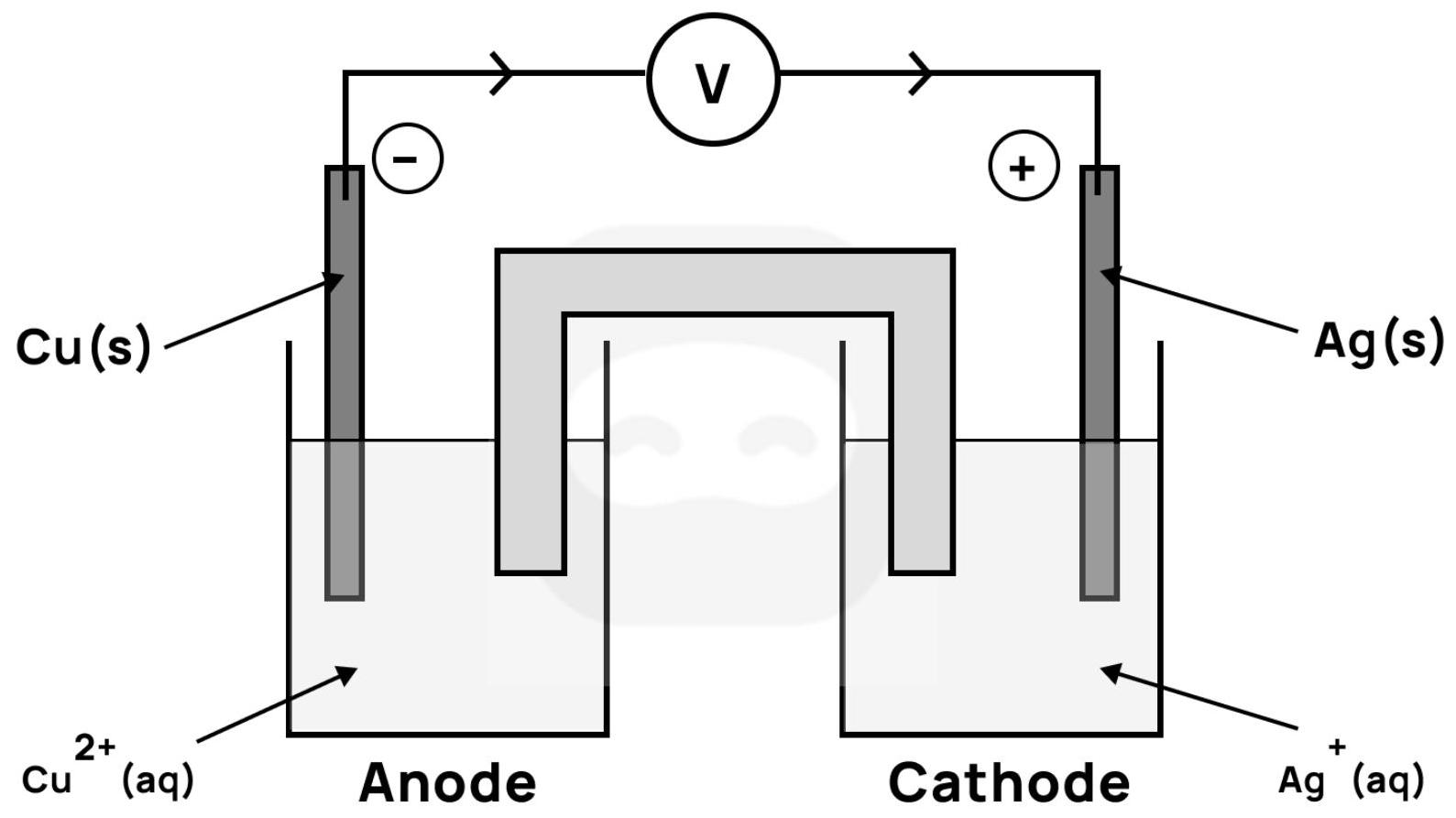
- IB
- Reactivity 3. What are the mechanisms of chemical change?

Practice Reactivity 3. What are the mechanisms of chemical change? with authentic IB Chemistry exam questions for both SL and HL students. This question bank mirrors Paper 1A, 1B, 2 structure, covering key topics like atomic structure, chemical reactions, and organic chemistry. Get instant solutions, detailed explanations, and build exam confidence with questions in the style of IB examiners.
The identity of the leaving group affects substitution reaction rates.
Define what is meant by a leaving group.
Compare the rate of substitution for and with the same nucleophile.
Explain your answer to part 2 with reference to bond strength.
Voltaic cells convert chemical energy into electrical energy.
Identify the direction of electron flow in a zinc–copper voltaic cell.
State the species reduced at the cathode.
Explain why the flow of electrons occurs in that direction.
Chlorine radicals can initiate a chain reaction.
Write the initiation step for the reaction between and .
State what happens to the electrons in this initiation step.
Identify the type of arrow used to represent movement of a single electron.
The diagram below shows a copper-silver electrochemical cell.

State the meaning of the term half-cell in an electrochemical cell.
Write the balanced half-equations for the reactions occurring at the anode and cathode.
Identify the direction of electron flow in the external circuit.
Suggest one reason why a salt bridge is necessary in this electrochemical cell.
State and explain what happens to the mass of the copper and silver electrodes during the operation of the cell.
The substitution of alkanes with halogens proceeds via a radical mechanism.
Write the overall equation for the reaction between methane and chlorine.
State the type of reaction this represents.
Explain why multiple substitution products can form in this reaction.
A radical chain reaction involves several steps.
Write one possible propagation step for the reaction of with .
Write the second propagation step that regenerates a chlorine radical.
Explain why chain reactions continue once started.
In a laboratory investigation, a piece of iron metal is placed into a solution of silver nitrate. After some time, a grey solid is observed forming on the surface of the iron.
Write the oxidation half-equation for iron forming .
Write the reduction half-equation for silver ions forming silver metal.
Combine the two half-equations to write the overall ionic redox equation.
Identify the species oxidized and the species reduced in this reaction.
Suggest why this reaction occurs spontaneously, based on relative reactivity.
Halogenoalkanes can undergo substitution with different nucleophiles.
Write the equation for the reaction between and .
Identify the organic product.
State the role of in this reaction.
Explain why is considered a strong nucleophile.
Molten magnesium chloride () is electrolyzed in an industrial process to extract magnesium metal. The electrolyte is heated to a temperature above the melting point of , and inert electrodes are used.
Identify the product formed at the cathode during this electrolysis.
Write the half-equation for the formation of this product.
Explain why electrolysis of molten salts is considered a redox reaction, referring to both electrode processes.
State one reason why electrolysis of molten salts is more energy-intensive than electrolysis of aqueous solutions.
Consider the redox reaction:
State the oxidation number of chlorine in .
Identify the species that is reduced.
Explain why this reaction is classified as redox.